How to Convert Batch Scripts (BAT) to Executable Files (EXE)
Have you ever written a batch script to automate tasks on your computer, like clearing temporary files, and wished you could turn it into a sleek executable file? Perhaps you want to share it with colleagues who aren’t command-line savvy, or need a secure way to distribute your tool without exposing the source code.

Whether you’re automating network diagnostics, creating system maintenance tools, or simply looking to make your scripts more user-friendly, this guide will walk you through methods to convert your batch scripts (BAT) into professional executable files (EXE).
Why Convert BAT to EXE?
Converting batch scripts (BAT) to executable files (EXE) offers several benefits. It enhances user-friendliness by allowing scripts to run with a double-click, eliminating the need for command-line interaction. This conversion also improves portability, making scripts easier to distribute and use on different systems without worrying about dependencies.
Additionally, it provides a level of security by hiding the script code and preventing unauthorized access or changes. IT administrators, software developers, and even casual users can leverage this process to automate tasks, professionalize script distribution, and simplify execution.
We’ll show you the simple conversion of batch scripts to executable files. Note, there can be complications if the batch scripts have errors or complexity.
We are using a batch script for ping checking as an example. Some methods below might look repetitive, but all the converting software has similar names.
Method 1: Use IExpress
IExpress.exe is the setup creation wizard available in Windows. This tool helps users create a single self-extracting package from a set of files. By using this, you can convert a batch script (BAT) to an executable file (EXE).
Note: IExpress.exe is included with Windows, so you don’t need to download anything extra.
- Press Win + R to open the Run dialog.
- Type iexpress and press Enter to open the IExpress Wizard.

Opening iexpress.exe as an admin - Select Create new Self Extraction Directive file and click Next.

Selecting “Create New SED” - Choose Extract files and run an installation command and click Next.
- Enter a name for your package and click Next.
- Select “No prompt“, then click Next.
- Select “Do not display a license“, then click Next.
- Click Add and select your .BAT file, then click Next.

Adding the batch script - In the Install Program menu, select your batch script and then type:
cmd /c your_batch_file.bat
Note: Replace your_batch_file.bat with the actual name of your batch script file.
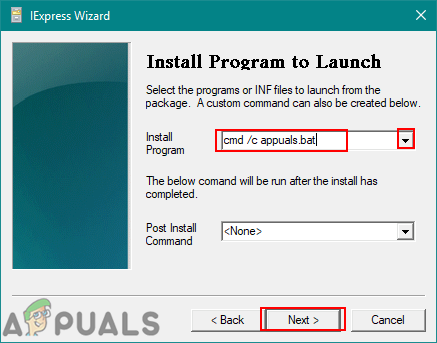
Adding command in front of the file name - Click Next on both the Show Window and Finished message screens. Then, provide the path and file name for the package.
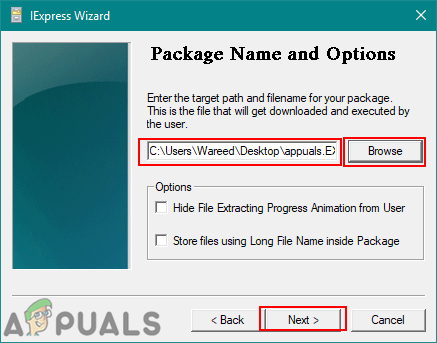
Providing the path and file name for saving - Click Next on Configure Restart, Save SED, and Create Package screens. Finally, click Finish.

Files successfully created - Navigate to the folder where you saved the files. You will see two files: an EXE file and an SED file. Double-click the EXE file to run it.
Method 2: Use BAT to EXE Converter
If the first method is confusing, you can download one of the third-party applications designed for this conversion. BAT to EXE Converter is a popular tool for converting batch scripts.
- Open your browser and go to the BAT to EXE Converter page. Click the link to download the tool and install it following the setup instructions.

Downloading BAT to EXE Converter - After installation, launch the BAT to EXE Converter. Click the Open icon at the top-left. Navigate to your batch script file, select it, and click Open.

Opening the batch script in BAT to EXE Converter - In the converter tool, click the Convert icon at the top. You will be prompted to choose a name and location for the new executable file (EXE). Set these and click Save.

Converting and saving the EXE file - Once the process is complete, you will have a new executable (EXE) file created from your batch script.
Method 3: Use Advanced BAT to EXE Converter
This tool differs from the one above. They have similar names but are published by different developers. This tool has some additional features for users, making converting batch scripts simple.
- Download and Install Advanced BAT to EXE Converter.
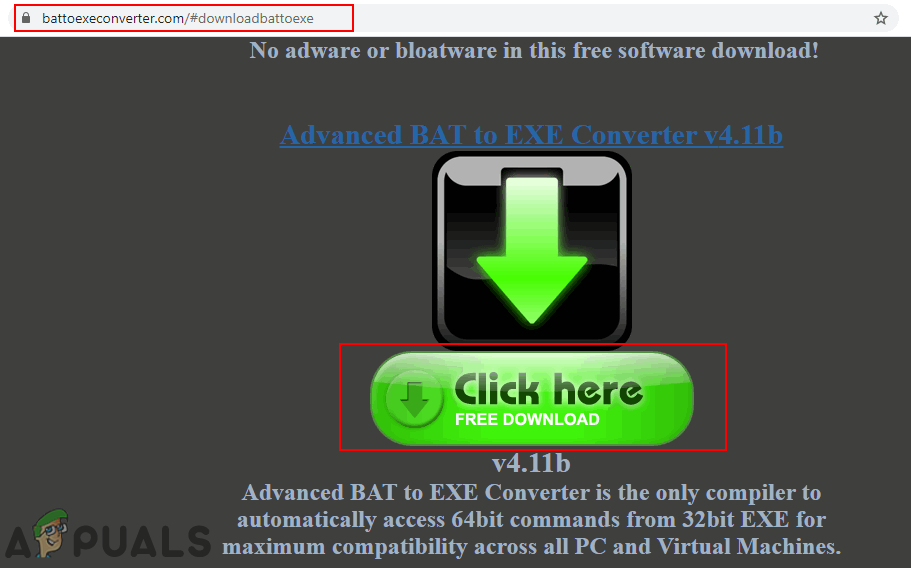
- Press the Windows key and type Advanced BAT to EXE in the search bar. Click to open the application.
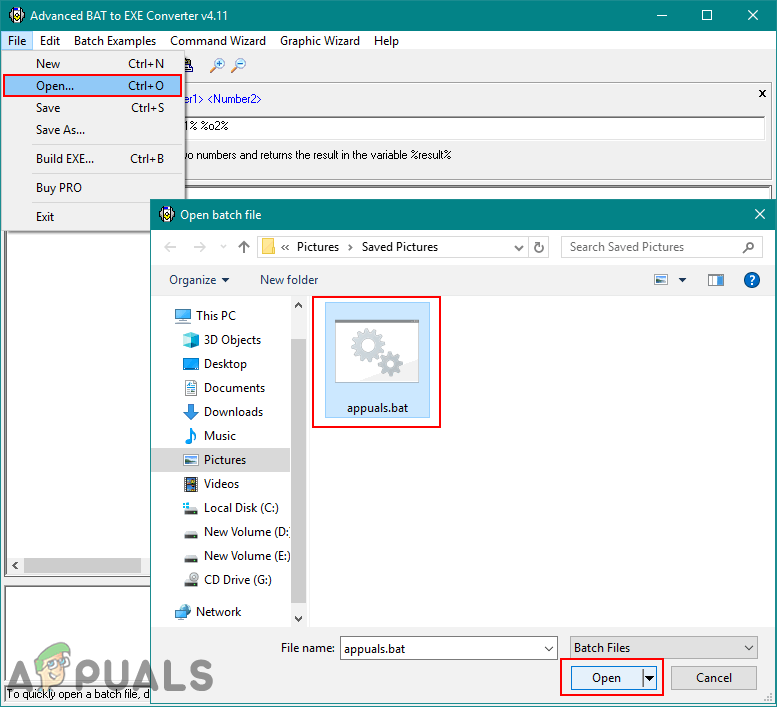
- In the application, go to the File menu and select Open. Locate your batch script file, select it, and click Open.
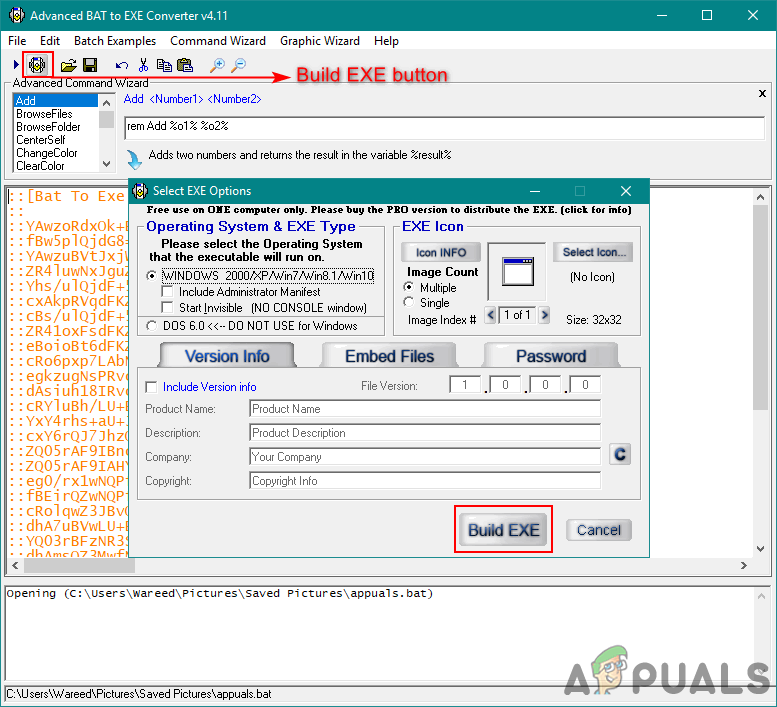
- Click the Build EXE icon under the menu bar. In the pop-up window, click the Build EXE button.
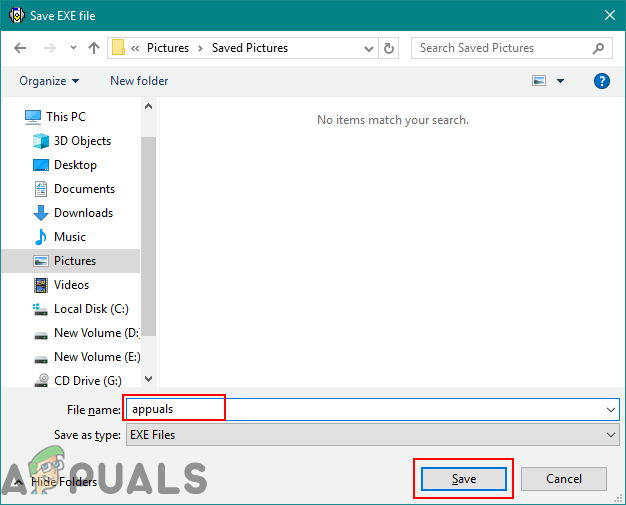
- Enter a name for your EXE file and click Save.
- Double-click the newly created EXE file to open and test it.
Other tools can help convert a BAT file to EXE. BAT 2 EXE can convert all available batch scripts in a folder by just selecting the folder. The BAT 2 EXE tool also allows you to add the Administrator manifest.





